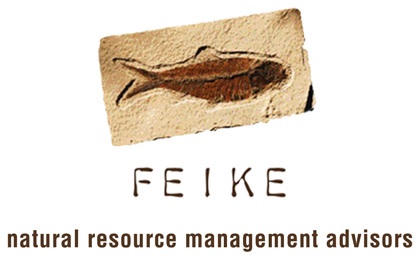The Minister of Fisheries stated in November 2009 that the abalone fishery would be "re-opened" to commercial fishing in February 2010. This did not happen. And as the Cape Times reported on 27 April 2010, many abalone divers are becoming angry and impatient with the "broken promises". Many once law abiding right holders have resorted to poaching themselves as they face the prospects of property repossessions and hungry families.
It is now the end of April 2010 and Winter in the Cape is about to arrive which will essentially prevent much diving - or at least safe diving. So what is needed at the very minimum to get commercial divers back into the water?
1. Scientific confirmation that a TAC can be sustainably allocated in terms of section 14 of the MLRA. In this regard, we are aware that independent scientific and departmental advice hold the view that approximately 150-200 tons of abalone can be harvested cumulatively from Zones A, B, D, E, F and G. Zones C and D (Hawston and Hermanus) remain (almost) completely denuded of abalone.
2. Amendments to the 2008 Dive Ban Regulations are required. These regulations prohibit any diving for abalone and must therefore be amended or repealed in their entirety if commercial abalone fishing is to commence. The Regulations also prohibit possessing, controlling or processing abalone. At the minimum, they require urgent amendment. In order to amend regulations, the Minister is to duty bound to adhere to the provisions of the Promotion of Administrative Justice Act of 2000. This Act requires the Minister to consult members of the public before she takes a decision to amend the regulations.
3. CITES. If we recall, MCM has to date failed to endorse a single CITES permit for the export of farmed abalone. On 1 May 2010, South Africa's own CITES regulations will come into force which absurdly shifts the obligation and burden of permit endorsement on abalone right holders and farmers! Should the right holder/farmer fail to have its permit endorsed, the right holder/farmer becomes criminally liable and the exported product will be returned by the importing state as it will be presumed to be illegal product as it would have been exported in violation of the CITES regulations. In other words, the regulations are essentially ensuring the de facto shutting down of the abalone fishery and farming industry with effect from 1 May 2010 as the burden of endorsing permits is so great, that neither MCM nor SARS have the resources, skills and capacity to do it but right holders and farmers will be expected to have their permits endorsed.. by who no one knows.
It is critical to understand that if the CITES regulations are implemented on 1 May 2010, the entire South African abalone farming industry worth an annual R280 million and responsible for employing more than 1100 people will grind to a sudden halt. Furthermore, any intention by the Minister to open the commercial abalone fishery will have to be shelved as there will be little point of any abalone being taken out of the sea as it will simply end up rotting at OR Tambo Airport as right holders wait in vain for their CITES permit to be endorsed. It is also important to note that almost none of the 300 commercial abalone right holders know that they will need to spend R5000 upfront annually for a CITES permit and a further R300 (upfront) for a consignment permit each time they wish to export any abalone product and this is in addition to the normal annual fishing permits costs (R1000) and the levies on each kilogram of abalone caught).
4. Compliance strategy. A comprehensive and completely new compliance strategy that is underpinned by a substantial compliance budget is required if commercial abalone right holders are not simply left to the mercy of poachers. In this regard, strategic partnerships are required with SEAWATCH, TRAFFIC, local authorities such as the Overstrand Municipality and the various enforcement agencies, such as SARS, SAPS and the Assets Forfeiture Unit. A significant number of very fast RIBS are required to ensure fast response times to reports of poachers in the water. This in itself assumes the existence of a 24hr reporting hotline staffed and supported by appropriately skilled personnel. A number of amendments to the current enforcement laws are required to ensure that the cost of poaching exceeds any possible financial benefits. We also need dedicated environmental courts to be in place to ensure that when poachers are arrested from day 1, they are tried in courts that understand the socio-economic and ecological damage poaching causes and the appropriate message is sent to other would-be poachers.
5. A workable and agreed inter-area fishing schedule. Because abalone fishing is split into essentially 5 geographic fishing zones from Gansbaai in the East to Cape Columbine on the West coast, the allocation of a zone nearest to where right holders live is crucial to ensuring that quotas get fished and that it makes economic sense for the right holder to be able to go out to sea and fish his quota.
